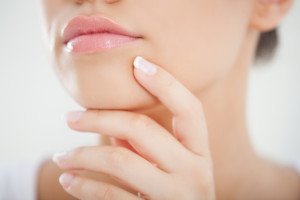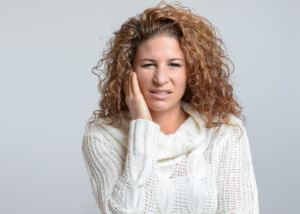
A tenderness that develops under one’s chin can become quite worrisome, bringing to mind the worst possible scenarios as to cause.
“Muscles of the face and neck are often propriocepted to control head and mandibular posture in a way that accommodates occlusion [contact between teeth], even if that particular occlusion is less than ideal,” says Jeffrey Haddad, DDS, of Doolin Haddad Advanced Dentistry in Rochester, MI.
“The four main facial muscle groups that we monitor and measure when treating a TMJ disorder include the anterior temporalis muscles, masseters, sternocleidomastoid (SCM) muscles and anterior digastrics.
“The anterior digastrics are located directly under the lower jaw right between the chin and neck.
“If muscular tension is present in these muscles, tenderness, discomfort or pain will be experienced in this area.
“Usually other symptoms accompany this tenderness under the chin; however, this is a very common symptom TMJ patients experience.”
But Dr. Haddad explains, “It is widely misunderstood what symptoms fall under with a temporomandibular joint disorder.
“Because the word ‘joint’ is involved in this heading, most patients, physicians and even dentists believe that clicking, popping or pain in the TM joints needs to be present if a person is considered a ‘TMJ’ patient.”
Though many people with “TMJ” experience the classic clicking, popping and grinding of their jaw, there are those who do not.
And instead, they may experience other symptoms including tenderness or soreness under the chin.
“The majority of TMJ patients I treat have no noise in their joints, no actual discomfort in their jaws and have an extremely healthy dentition,” says Dr. Haddad.
But these aren’t necessarily lucky patients. They still suffer from the other symptoms, including head pain, ear pain, neck pain and chin pain or soreness.
Tenderness under the chin can also be caused by resting that area on a knuckle or part of your hand while using a computer.
The continuous pressure could cause the soreness, but this is nothing serious.
To test this theory, review where your hands often are while you’re working on the computer.
If you realize that they indeed are pressing up on the underside of your chin, then cease this habit and see if the soreness or tenderness beneath your chin doesn’t vanish.
Additional Causes of a Tender Spot Under the Chin
“Things that cause a tender chin include the following,” says Susan L. Besser, MD, with Mercy Medical Center, Baltimore; Diplomate, American Board of Obesity Medicine and board certified by the American Board of Family Medicine.
“Swollen, tender submandibular lymph nodes,” continues Dr. Besser, pointing out that lymph nodes are not glands.
However, if the salivary glands are inflamed, continues Dr. Besser, this can cause soreness beneath the chin.
So can a local skin infection, which can be caused by “razor bumps” or acne.
Inflammation of the gums or a sore tooth, as well, can cause the annoying symptom.















